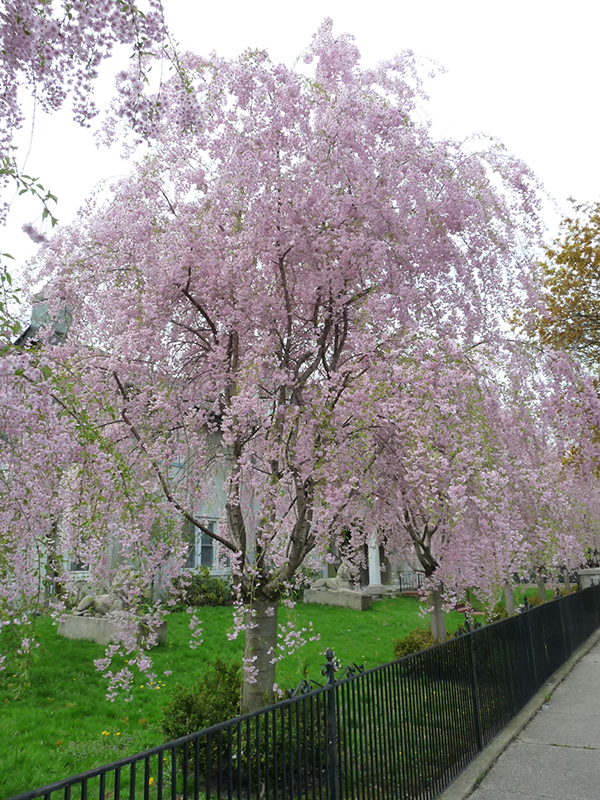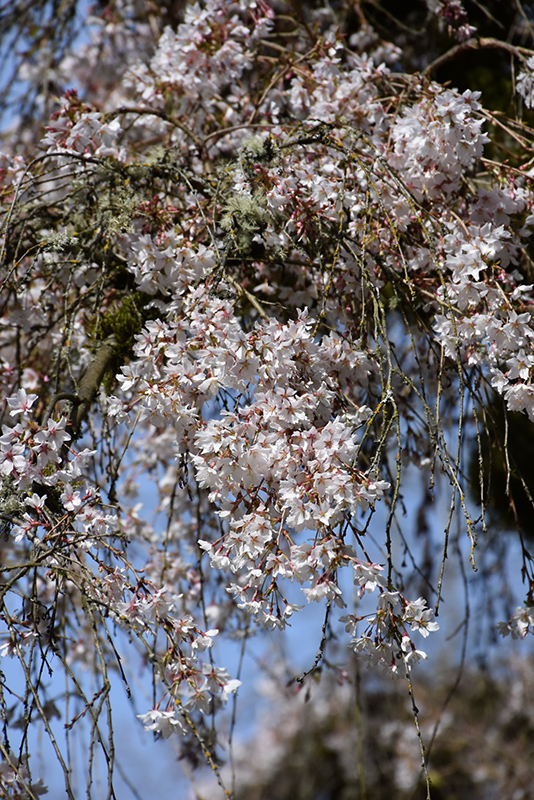Plant Finder
Weeping Higan Cherry
Prunus subhirtella 'Pendula'
Height: 20 feet
Spread: 25 feet
Sunlight:
![]()
Hardiness Zone: 5
Other Names: Spring Cherry, Rosebud Cherry
Description:
A stunning accent tree with a graceful, weeping habit of growth; features clouds of very pale pink flowers in spring before the leaves, colorful bark and good fall color; needs full sun and well-drained soil; quite adaptable for a cherry
Ornamental Features
Weeping Higan Cherry is smothered in stunning clusters of fragrant shell pink flowers with white overtones along the branches in early spring, which emerge from distinctive pink flower buds before the leaves. It has dark green deciduous foliage. The glossy pointy leaves turn yellow in fall. The fruits are showy black drupes displayed in early fall. The smooth dark red bark adds an interesting dimension to the landscape.
Landscape Attributes
Weeping Higan Cherry is a deciduous tree with a rounded form and gracefully weeping branches. Its average texture blends into the landscape, but can be balanced by one or two finer or coarser trees or shrubs for an effective composition.
This is a relatively low maintenance tree, and is best pruned in late winter once the threat of extreme cold has passed. It is a good choice for attracting birds to your yard. It has no significant negative characteristics.
Weeping Higan Cherry is recommended for the following landscape applications;
- Accent
Planting & Growing
Weeping Higan Cherry will grow to be about 20 feet tall at maturity, with a spread of 25 feet. It has a low canopy with a typical clearance of 1 foot from the ground, and is suitable for planting under power lines. It grows at a medium rate, and under ideal conditions can be expected to live for 60 years or more.
This tree should only be grown in full sunlight. It does best in average to evenly moist conditions, but will not tolerate standing water. It is not particular as to soil pH, but grows best in rich soils. It is highly tolerant of urban pollution and will even thrive in inner city environments, and will benefit from being planted in a relatively sheltered location. This is a selected variety of a species not originally from North America.







